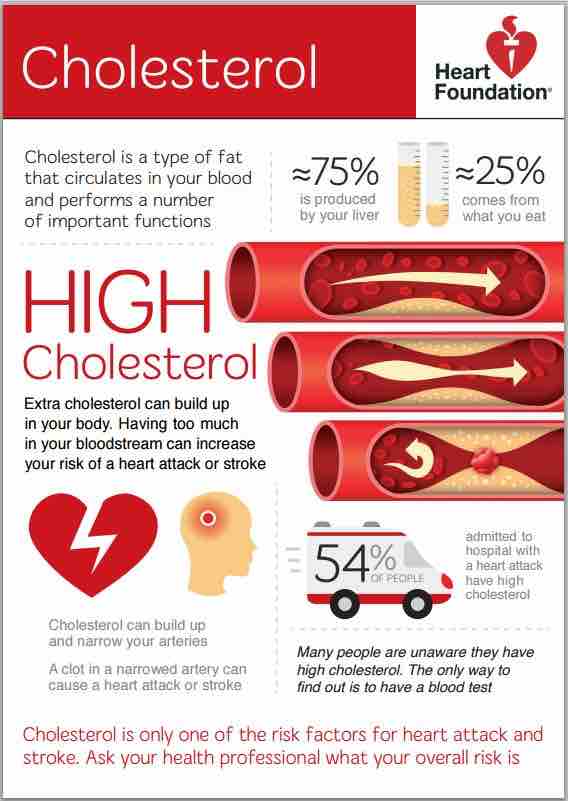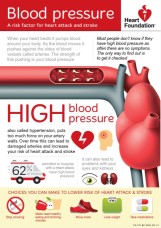Wishing everyone a safe and happy Christmas and New Year – Meri Kirihimete from the Healthify team.
Atherosclerosis
Also known as arteriosclerosis
Key points about atherosclerosis
- Atherosclerosis is the disease process of hardening of the arteries.
- Fatty deposits build up over time in the walls of the arteries, forming lumps (atheroma) which extend into the artery and reduce the blood flow.
- Atherosclerosis increases the risk of conditions such as coronary heart disease, angina, stroke and heart attack.
- Treatment includes medication, medical procedures, eg, angioplasty or heart surgery, in combination with lifestyle changes.

When we're born, our blood vessels are flexible and elastic, and the blood is able to flow through them with ease. As we age, fatty deposits start to develop in the walls of our arteries and gradually they build up, forming lumps called plaques which extend into the middle of the artery, reducing the ease of blood flow through the artery. This process can be broken down into 3 stages:
- Fatty streaks – damage to the inner wall of the artery allows infiltration of fatty substances. At this stage artery damage is minimal and the blood flow isn't seriously affected.
- Soft plaque – repeated injury at the site of the fatty plaques results in a thickening of the artery's middle layer. Deposits of cholesterol, fatty substances, connective tissue and blood products form a soft cap or plaque. This bulges into the channel of the artery, restricting the flow of blood.
- Hard plaque – all 3 layers of the wall of the artery are affected. The artery's channel is now almost blocked.
This process can affect any organ. Atherosclerosis of the arteries:
- going to the brain can lead to a stroke
- can cause peripheral arterial disease or clogging of small arteries going to the legs
- in the heart can lead to angina or a heart attack.
Thrombosis is the medical term for a clot, the natural process that stops us bleeding when we injure ourselves. In coronary artery disease a clot forms, not as a result of an outside injury, but as a result of damage to the inner lining of the artery wall, caused by the fatty build-up (plaque) in the wall of the artery.
Normally the lining of the artery is smooth, but when a plaque builds up, the walls are no longer smooth and sometimes the protruding plaques crack open. When this happens, platelets (blood cells that help with clotting) stick to these cracks to seal them. As long as the artery is not very narrowed, then no harm occurs.
But if the narrowing is already severe, then even a small clot forming on the top of a plaque can have a serious effect on the blood's ability to flow through the artery.
The formation of a clot is one of the main problems in coronary heart disease. It's the cause of most heart attacks.
Treatment depends on the area affected. The narrowing of the artery can be in one area, multiple areas, or affect an artery throughout its length. This is important for your doctor to know as it will affect their decision regarding what treatment is best for you.
Doctors often talk about 1, 2 or 3 vessel disease; this refers to how many and which of the main branches of the coronary arteries are affected. In general, 1 or 2 vessel disease may be treated with medicines or angioplasty, whereas 3 or more vessel disease usually requires bypass surgery.
What we do and eat every day makes a big difference to our risk of atherosclerosis building up in our blood vessels. The key things you can do are the same as for heart health.
- Eat heart healthy foods
- Be smoke free
- Keep physically active
- Have a regular heart risk assessment and know your numbers for your weight, blood pressure and cholesterol. Work with your doctor/nurse to get them down if high.
- If you know you have atherosclerosis or any cardiovascular disease, ask your healthcare provider for a care plan and review what warning signs you need to know about.
Apps reviewed by Healthify
You may find it useful to look at some Nutrition, exercise and weight management apps, Quit smoking apps and Blood pressure apps.
Apps
Nutrition, exercise and weight management apps
Quit smoking apps
Blood pressure apps
Resources
Cholesterol(external link) Heart Foundation, NZ, 2019 English(external link), Chinese(external link), Hindi(external link), Korean(external link), te reo Māori(external link), Samoan(external link), Tongan(external link)
Blood pressure information sheet(external link) Heart Foundation, NZ, 2019 English(external link), te reo Māori(external link), Tongan(external link), Chinese (traditional)(external link), Hindi(external link), Korean(external link)
My heart check(external link) Heart Foundation, NZ
References
- Atherosclerosis(external link)(external link) National Institute of Heart, Lung and Blood, US
- Atherosclerosis – explained(external link)(external link) Watch, Learn, Live: Interactive Cardiovascular Library – American Heart Association
Brochures

Heart Foundation, NZ, 2019
English, Chinese, Hindi(external link), Korean(external link), te reo Māori(external link), Samoan(external link), Tongan(external link)

Heart Foundation, NZ, 2019
English, te reo Māori, Tongan, Chinese (traditional), Hindi, Korean
Credits: Healthify editorial team. Healthify is brought to you by Health Navigator Charitable Trust.
Reviewed by: Associate Professor Sue Wells, Public Health Physician, University of Auckland
Last reviewed:
Page last updated:





